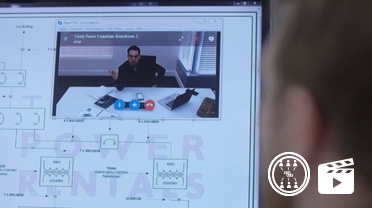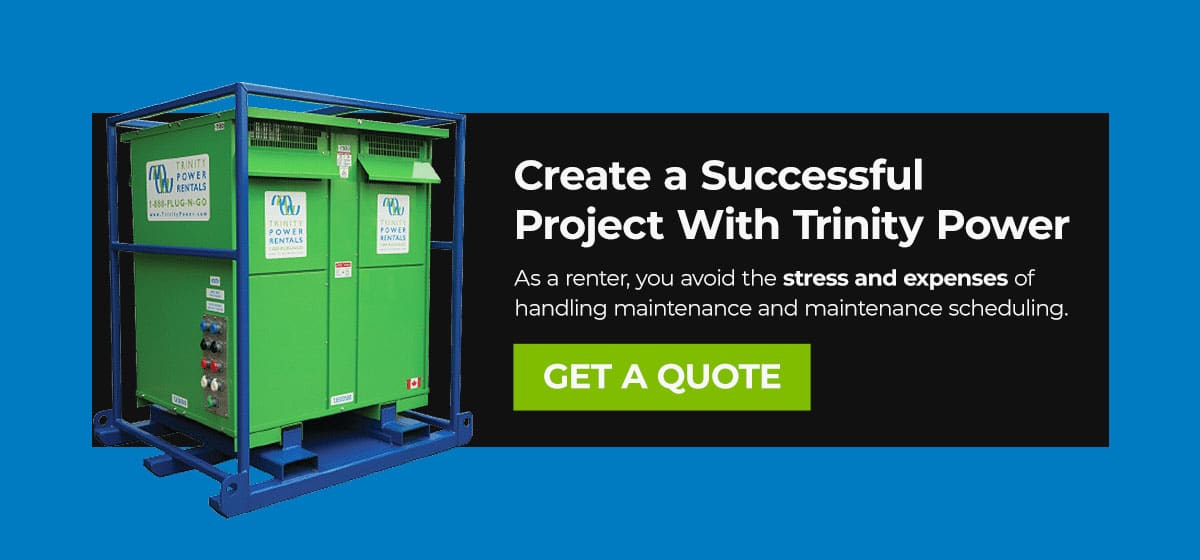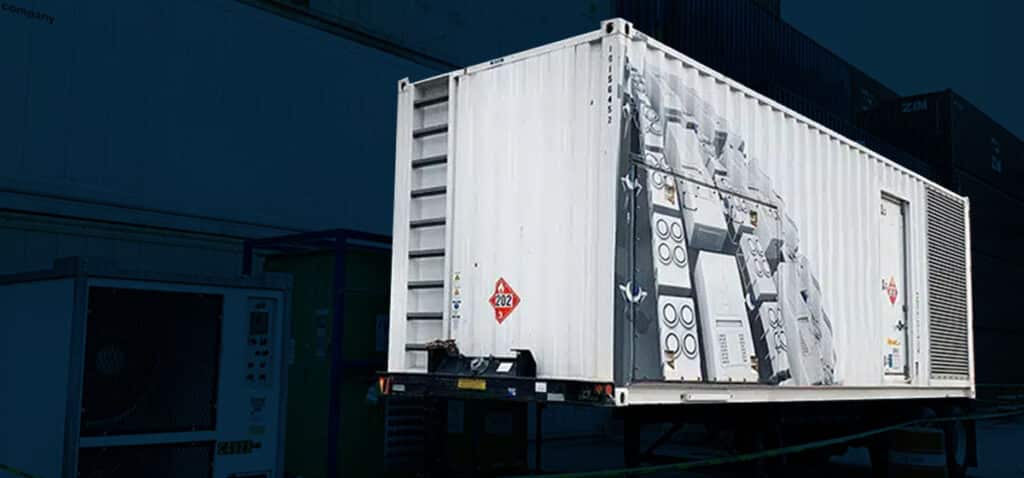- OUR APPROACH
-
COMMITTED TO YOUR SUCCESS
Our approach, developed over decades of experience, is fine-tuned to get the results you want.
We deliver concept-to-completion solutions, designed by temporary power specialists with access to the largest inventory of high-quality power generation and distribution equipment in North America.
-
- Equipment
-
RENTALS
From a wide range of diesel and natural gas generators to transformers, cable, light towers and more, our large rental fleet and extensive vendor network ensure we’ll have the temporary power equipment that your project requires — every time.
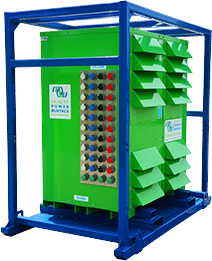
-
- Industries
-
INDUSTRIES WE SERVE
For nearly 20 years, we have been at work powering projects across Canada’s industrial sectors.
Select from this sampling of industries to learn how we can put our expertise to work for you.
VIEW ALL- Projects
- About
-
A PROUD HISTORY. A BRIGHT FUTURE.
From our inception in 1998, we have been building our team on a foundation of excellence. Our team members’ passion, expertise and commitment are what have allowed us to grow into a national company with projects across Canada.
Click on the links to learn more about our history, our team or our career opportunities.
- Blog
- Contact
-
A transformer facilitates power in the electrical grid. These devices are essential for many aspects of everyday life but can also enhance project efficiency and productivity while bringing cost savings, enhancing energy efficiency and reliably supporting power needs.
Selecting the right commercial transformers for your next project is simple when you understand how they work and their applications and benefits.
The Vital Role of Commercial Transformers
Transformers are electrical devices that convert high-voltage, low-amperage electricity to lower-voltage, high-amperage electricity the consumer can more readily use. These devices typically do not have moving parts — as a result of having no active cooling — making them static machines.
Transformers can control circuit voltage levels to step down or increase voltage levels or currents in power generation stations. These devices make it possible to change high-voltage electricity with small currents into low-voltage electricity with large currents or the reverse.
These devices are most useful when you need to isolate two circuits or change the voltage in one circuit. Typically, transformers are present for any application using alternating current electrical energy. One of the most common transformer use cases is to lower the voltage from transmission lines to allow low-voltage devices to run.
The construction, mining, electrical contracting, utility, automotive, manufacturing, oil and gas, railway, and electrochemical industries use transformers to achieve various outcomes. Some applications for transformers include transmitting power to large-scale industrial processes and heavy machinery and decreasing voltage in lighting systems before the electricity reaches power consumers.
Understanding Transformers and Energy Transmission
Transformers work by utilizing two coils of wire around a metal core. The first coil is for incoming electricity, while the second is for outgoing electricity. The primary coil connects to a power source, and the other coil connects to the load. As electricity comes to the first coil, an alternating magnetic field appears in the core, allowing alternating currents to be generated in the second coil. This process allows for safe power distribution because high voltages are dangerous for residential or business use or other applications needing low voltage.
There are two main types of transformers — step-up and step-down. The most notable difference between these two types is that step-down models reduce output voltages while increasing amperage, while step-up units increase output voltages while decreasing amperage.
- Step-up: Step-up transformers are common for power transmission. Primary voltages are lower than secondary voltages in these devices. The main function of a step-up transformer is to raise a low voltage, and the ratio of primary to secondary winding turns is less than one. This ratio indicates that the secondary winding possesses more turns than the primary winding. Depending on your power supply, you can find single-phase or three-phase devices to suit your applications.
- Step-down: Step-down transformers are standard for power distribution and are often beneficial for residential and other low-voltage applications. In these devices, primary voltages are higher than the secondary ones. The main function of the transformer is to reduce the voltage, but specific reduction varies depending on primary to secondary windings. There are several types of step-down transformers, including single-phase, multi-tapped and center-phase devices.
You can also find specialty transformers to meet unique project needs. When you have specific requirements, you can work with a power vendor like Trinity Power to find solutions. Our industry experience and vast network of specialty suppliers empower us to find a tailored and project-focused solution without compromises.
The Advantages of Using Industrial Transformers
Transformers come in various sizes and capabilities, empowering you to find the right solution to enhance project efficiency and experience a range of other benefits. Benefits of industrial and commercial use of transformers include:
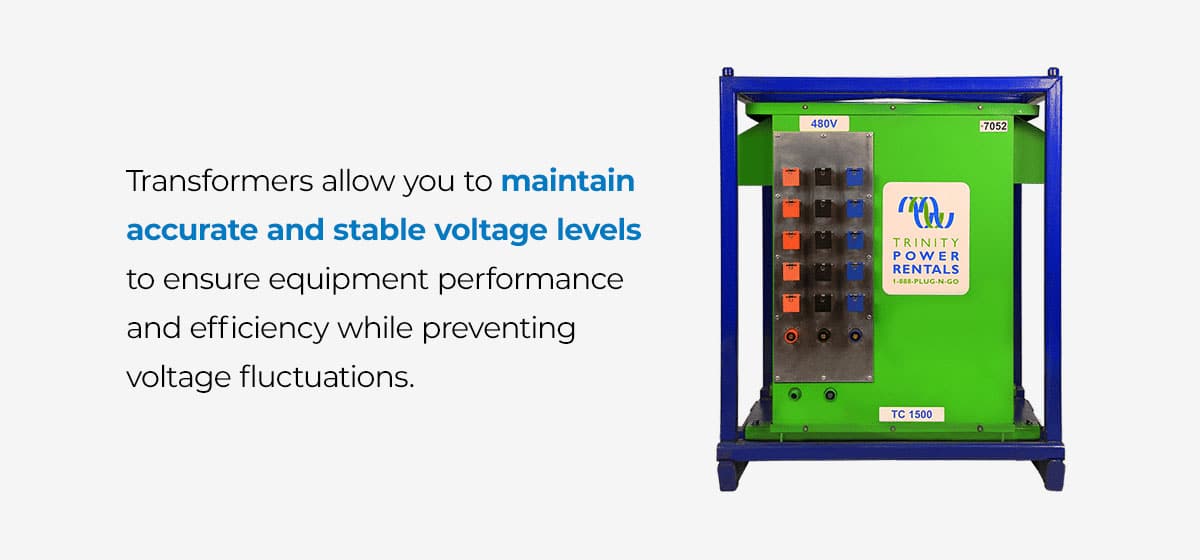
- Meeting regulatory compliance: You can use transformers to customize voltage reduction requirements to ensure you meet regulations for various applications. Transformers allow you to maintain accurate and stable voltage levels to ensure equipment performance and efficiency while preventing voltage fluctuations. Additionally, energy-efficient transformers can help you save money in the long run.
- Enhancing productivity: Transformers’ efficient operation and enhanced voltage regulation contribute to system reliability. They can help prevent power-related issues like spikes and sags that can impact equipment and operations, meeting the needs of the system so that the power consumers don’t break from a bad voltage/current. Avoiding these issues empowers your team to work with maximum efficiency without worrying about unnecessary downtime due to maintenance.
- Finding cost-efficient solutions: Renting a transformer can allow you to save costs in several ways. First, you can save on electricity expenses by using a transformer to reduce energy losses. Additionally, renting offers a more budget-friendly solution than investing in an expensive installation for other types of equipment. Furthermore, by producing the proper voltage for equipment, you can extend equipment life spans, reducing the frequency of needing repairs, maintenance or replacements.
- Embracing versatility: Transformers are versatile devices that can be used in different applications. By renting a transformer, you can alter voltage levels in residential and industrial settings to support multiple types of electrical systems.
- Supporting sustainability: All types of industries, including electrical contracting, are embracing sustainability as consumers shift their focus to greener practices and alternative solutions. Transformers aid in increasing energy efficiency by reducing energy waste and enabling the least amount of fossil fuel use to input electricity.
How Trinity Power Supports Projects Across North America
Trinity Power delivers complete power solutions for a variety of industries nationwide. Our vast network of valued partners and suppliers empowers us to work on many projects across sectors, including construction, oil and gas, film, events, mining, utility, electrical contracting, emergency, cryptocurrency, and infrastructure.
Our goal is to deliver a concept-to-completion power solution that is easy to use, safe and reliable. Our vast fleet includes low- and medium-voltage transformers so that you can find the best power solution. We have the equipment you need and the capability to find whatever you’re looking for. Trust our skilled professionals to find a project-focused solution that works for you.
Create a Successful Project With Trinity Power
The Trinity Power team can design the power solution your team needs to unlock cost savings and drive efficiency.
Whether you’re an individual looking for a temporary power solution or a business searching for a project-focused power alternative, you can find what you’re looking for at Trinity Power. Discover how we can help your team uncover potential by completing an express quote today.
Related Articles
Subscribe for access to exclusive content
"*" indicates required fields




